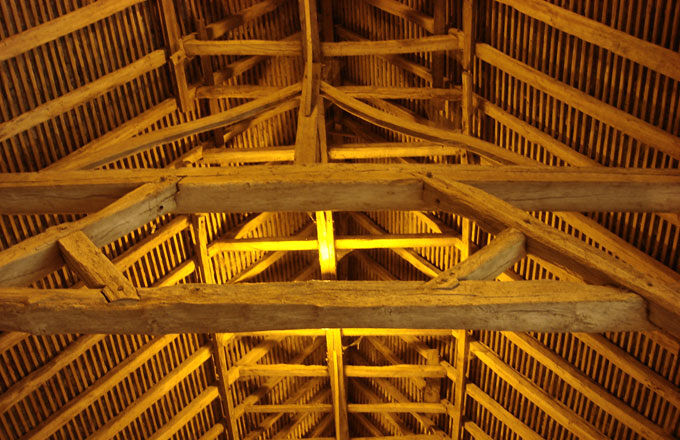Influence of English styles on the art of wood
Although modest as a whole, Martinique has been influenced by different English styles in terms of its proof furniture, well English names still persist in the vocabulary such as side board, in Creole “side bot”, tray, etc. ….
Two major reasons can be mentioned 1 – the English occupation of Martinique on three occasions – one from 1762 to 1763 – the second from 1794 to 1802 – the last from 1809 to 1815
2 – the immediate environment of Martinique which is only English-speaking from the second half of the 18th century and the result of the economic and cultural exchanges which result from it. Indeed, in the field of furniture, if indeed certain pieces were brought during the occupation by both political and military authorities, the fact remains that fruitful exchanges took place with Dominica throughout the 18th century : some pieces of furniture were mass produced and sold in Martinique.
Our local artisans, probably struck by their new lines, reinterpreted them in their own way, and sometimes introduced such a line, sometimes such ornamentation into existing furniture, initiating the composite style that characterizes our Creole furniture so well.
But it is especially from the 1960s – 1970s that, faced with the establishment of antique stores and the scarcity of authentic local furniture, we witness the introduction of authentic pieces of furniture coming for most neighboring islands including Barbados, Saint Lucia, and Dominica. A real craze ensued for pieces offering lighter, less harsh lines, and a variety of choices. Many copies will then invade Martinique and still occupy a place of choice among antique dealers. Seven styles which have followed one another in England from the 17th to the 18th century still influence our production.
The Queen Ann So called from the name of Anne Stuart who reigned in England from 1702 to 1714, this style, contemporary at the end of the 17th century, is characterized by curved lines, particularly at the strongly arched feet of the seats. Saying in a cabriole, they draw a very marked projection on the crossbar and rest on ball feet which are clasped by the claws of an eagle: “clawball”. This characteristic stylistic element, very much in favor between 1720 and 1750, seems to be inspired by an imperial Chinese tradition.
Chippendale style Named after Thomas Chippendale (1718 – 1779), who introduced Rococo shapes into English furniture and above all the systematic use of mahogany. In addition to the loans he made from the French rock garden, this style is characterized by its diversity. The curve and the curve gain the furniture which is inspired as much by medieval Gothic by the use of warheads, crenels or lanceolate crosses in the ornamentation, as by Chinese art by decorations of dragons, pagodas or of lattice geometric networks. These influences combine and overlap, sometimes giving a curious amalgam.
The Adam style (1760-1800) After the fantasy introduced by Chippendale for twenty years, the English returned to more formalism by giving all its breadth to the neoclassical or even Palladian style.
The latter was introduced at the beginning of the 18th century with the re-edition in 1716 of the architectural treaty of Palladio (master of the Italian architectural Renaissance) and in 1727 of the work of the architect Inigo Jones on Greco-Roman art : the two forerunners of this Palladian revival being the architect William Kent (1684 – 1748) and Lord Burlington (1693 – 1753).
The return to regular straight lines is advocated by the architect Robert Adam (1728 – 1792) and his brother James (1730-1794) who put this style in vogue from 1767 with less rigor: “he prefers, indeed, any the range of light, elegant moldings, gracefully decorated and finely highlighted. The style becomes slender and graceful, while being sober and refined. The scrolls, the leaves, the interlacing develop in very delicate linear patterns … ”as well as the sculpted patterns of classical inspiration.
Hepplewhite style Despite the success of the Adam brothers, who at the end of the 18th century were the most popular, setting the tone for the style, decorators offered other models, such as Hepplewhite, which published in 1788 a series of drawings in which the Adam style was seen. suitable for everyday objects.
The shapes are simpler and at the same time precious. The use of mahogany gives a certain robustness to clearly drawn and highlighted lines. urn. Carved feathers called “Prince of Wales” also adorn them. In addition, from 1775, he abandoned the sheathed shape of the feet of his seats to turn them.
Particularly representative is the mahogany chair with backrest in shield (shieldback) or in the heart, or even in oval shape decorated with the three heraldic feathers of the Prince of Wales, and with feet generally straight, narrowing down, of round or square section .
Sheraton style named after Thomas Sheraton (1715-1806) gives more simplicity to the monumental forms of Adams. The lines are more structured and uncluttered inspired in this by the French Louis XVI style.
Regency Its name comes from the Regency of the Prince of Wales, which encompassed the period from 1811 to 1820. If this style retains the name, it was already taking shape at the end of the 18th century (1790) where England, like the France suffered a strong influence from Antiquity. The classical culture of Greco-Roman Antiquity and the interest for archeology and exoticism then inspire art and naturally, create a neoclassical current used in decoration and lines of furnishings.
We find, in fact, the French Directoire, Empire and Restauration styles, strongly imbued with these influences.
Saber, spindle, sheath, grid, lion’s hock feet are the characteristics. The lines of the furniture are sober, even severe and hardly decorated. The decor often consists of the contrast formed by the design of the furniture itself, underlined by simple contrasting wooden nets. The Empire style seems to be the main inspiration of Regency. Although more majestic and heavy, the English introduce their innate sense of harmony, lightness, and elegance of forms, factor of comfort which is their own.
From the middle of the 18th century, the craze for English furniture swept across continental Europe. The search for comfort and the intimate warmth of interiors goes around the world. One might think that the French “Napoleon III style” derives from it, particularly in papier-mâché “neo rococo” furniture.
Elegant, moderate and balanced in forms, adapted by the craftsmen of the English-speaking islands in the woods of the country, the English style furniture has conquered Martinican interiors by the impression that it gives to be always in fashion and everywhere in its place in all settings.




